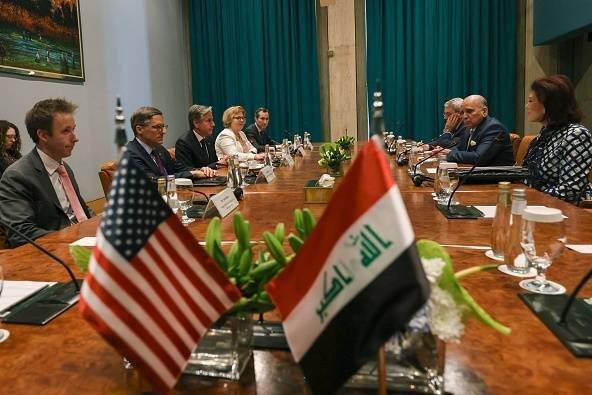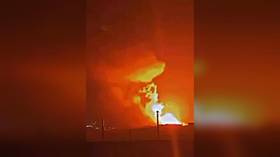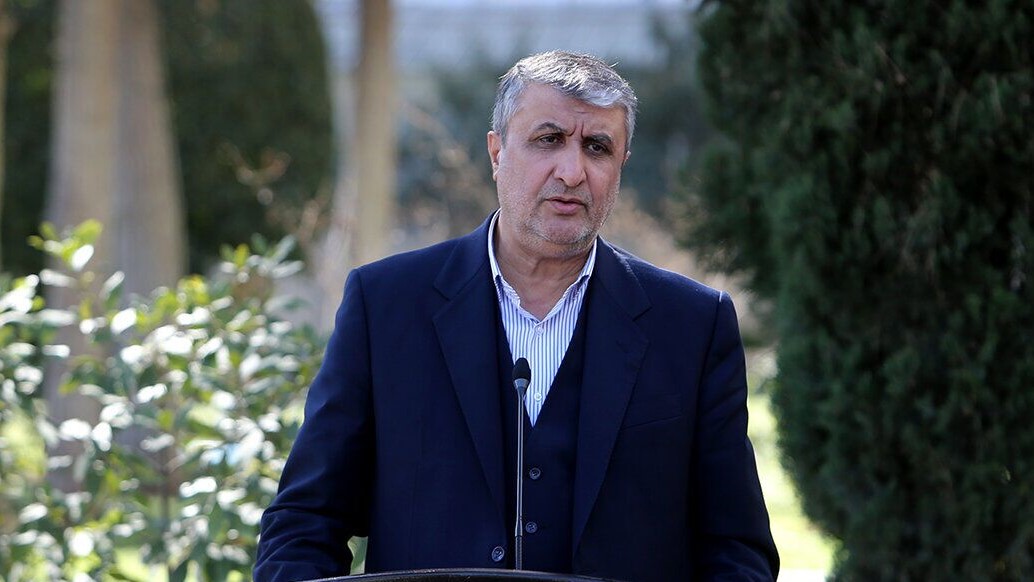NOVANEWS
The Fedayeen Saddam

Posted by: Sammi Ibrahem,Sr
Saddam Hussein created the Fedayeen Saddam in 1994 as a paramilitary Praetorian unit. The Fedayeen were initially charged with protecting the regime from a repeat of the revolts that followed Saddam’s eviction from Kuwait by acting as a pre-emptive counter-insurgency force. Over time this internal security mission became increasingly about enforcing the Islamic law. Saddam had begun Islamizing his regime in the late 1980s, and intensified this in the early 1990s, attempting to create a synthesis of Ba’athism and Salafism to buttress his legitimacy. Saddam had begun Islamizing his foreign policy as early as 1982-83, making alliances with all manner of Islamist terrorists, thousands of whom came to Iraq for training in the 1990s, where they attended camps run by the Fedayeen. In the Fedayeen—connected to the global Islamist terrorist movement, combining elements of Ba’athism with an increasingly-stern Salafism—is a microcosm of the Saddam regime’s mutation into the Islamic State (ISIS).
In March 1991, after Saddam’s annexation of Kuwait had been reversed, two intifadas broke out inside Iraq—in the Kurdish north and the Shi’a south—and they would shape Saddam’s security calculations ever-afterward. Saddam would now see internal dissent, far more than any external actor, as the chief threat to his regime. To counter-act this threat, Saddam created paramilitaries—the Fedayeen Saddam (Saddam’s Men of Sacrifice), al-Jaysh al-Quds (the Army of Jerusalem), and the Ba’ath Party militia—of which the Fedayeen was primus inter pares that “swore loyalty not to Iraq but to its president“.
Saddam had always been distrustful of the official military, seeing it as the likeliest source of a coup. After Saddam executed a number of senior Generals, blaming them for the failure in Kuwait, despite the fact the senior Generals opposed the Kuwait invasion, trust between Saddam and the senior military leaders broke down entirely. The professional military complained that the Fedayeen starved them of scarce resources; this was not an accident. Saddam sought to check the power of the senior Generals with the militias, specifically the Fedayeen, which operated outside the usual lines of command, answerable to Saddam’s oldest son, the psychopathic Uday. The Fedayeen’s recruits were selected far more for their fanatical loyalty to the dictator rather than their military skill.

“Uday’s Fedayeen … were staffed by people who were not senior regime members and had little access to intelligence or important operations,” Joel Rayburn, a former intelligence officer and adviser to Gen. David Petraeus who wrote a history of Iraq, told me. “[Izzat ad-Douri] and his people were … powerful inside the regime and plugged into the inner circle,” Rayburn said, while the Fedayeen were the opposite. “Basically Uday had to create a force by recruiting from the leftovers, including Shi’a from Baghdad,” Rayburn added.
Still, the Fedayeen did what was needed: distributed throughout Iraq, especially the Shi’a south, they formed a pre-emptive counter-insurgency force, using espionage, intimidation, and violence in best KGB fashion to liquidate those who even might pose a threat to the regime, notably Shi’a clerics who were gaining too much popularity, such as Grand Ayatollah Muhammad Muhammad Sadiq as-Sadr, the spiritual leader of Iraq’s Shi’ites. ISIS has rather notably mobilized the same tactics of infiltration and pre-emptive assassination in the areas it conquers.
To evade the sanctions, Saddam set up a grey economy run by Douri, his deputy, which smuggled oil and other goods across Iraq’s borders, funding a patronage network of security services (including Saddam’s Praetorians like the Fedayeen), tribes, and criminal elements to hold the regime in place. Douri took the chance for personal enrichment and also set up a Freemason-style parallel network based on his Sufi Naqshbandi Order, which would be formally activated as an insurgent group, Jaysh Rijal at-Ṭariqa an-Naqshabandiya (JRTN), after Saddam was sent to the gallows and Douri took the leadership of the Ba’ath Party. It was this sub-State structure in toto, overwhelmingly Sunni Arab, melded with foreign-led Salafi-jihadists, that resisted the new order after Saddam’s overthrow, and it was this structure that spawned ISIS.
Douri also led the Faith Campaign, which formally began in June 1993, intensifying the internal Islamization process Saddam started no later than 1989. The State indoctrination added Salafism to the cult of the leader and the sensibilities of pan-Arabism, effectively creating a religious movement—”Ba’athist-Salafism”—
The “pure” Salafis were one of the trapdoors in the Faith Campaign, with some going on to launch terrorism against the regime, as were men like Grand Ayatollah Sadr, since the Campaign allowed Shi’a clerics more religious freedom, which ended up highlighting the potential power of Shi’a opposition.
The security services were deeply affected by the Faith Campaign. Sent for mandatory religious instruction and to infiltrate the mosques, many Ba’athists in the military and intelligence agencies took to the faith, some choosing Salafism over Saddam, not least as a source of comfort and a means of atonement for the atrocities they had committed. After the regime collapsed, the “former regime elements” (FREs) who formed the core of the insurgency were already

Alex Mello, the lead Iraq security analyst at energy advisory service Horizon Client Access, points out, “Despite its die-hard Saddamist affiliation the Fedayeen increasingly Islamized as the insurgency went on, a process undoubtedly accelerated after Saddam’s capture in December 2003.”
Douri thus laid the physical and ideological basis for ISIS. By the time the Fedayeen were created in October 1994, Saddam had already begun his mosque-building campaign and subsidizing religious teachers and imams, making them their communities’ leaders, both policies laying the groundwork for the religiously-inspired post-Saddam insurgency. Gambling and public consumption of alcohol had already been banned, and zakat (the Islamic poor tax) and the shari’a punishment for theft (amputation) had already been imposed. In August 1994, the regime made prostitution a capital crime.
A good example of the Fedayeen acting as a mutaween (religious police)—and not-incidentally foreshadowing ISIS—was the beheading of women accused of prostitution, with swords, in front of their own homes, before an assembled crowd, with their “heads … left on the front doorsteps … as a deterrent.” Human rights groups say at least 200 women were beheaded in this way in the Saddam regime’s final two years.
Fedayeen Saddam
The Fedayeen produced gruesome propaganda videos showing barbarous acts—from eating live wolves to lurid forms of murder for “spies”—intended to further recruitment and to intimidate enemies. Military exploits by masked Fedayeen were also videoed and distributed. A focus was put on inculcating the “spirit” of the Fedayeen—believed by many senior Saddamists to be the “spirit” the regime needed to recover—in children, with camps set up where children were given guns and military training (again, on disseminated video). While corruption overtook the Saddam regime in the 1990s—even, in the compliment of vice to virtue, corruption within the regime’s organized, sanctions-busting criminality—the reaction to corruption (financial and moral) in the Fedayeen was ferocious:
PUNISHMENTS … INCLUDED HAVING ONE’S HANDS AMPUTATED FOR THEFT, BEING TOSSED OFF A TOWER FOR SODOMY, BEING WHIPPED A HUNDRED TIMES FOR SEXUAL HARASSMENT, HAVING ONE’S TONGUE CUT OUT FOR LYING, AND BEING STONED FOR VARIOUS OTHER INFRACTIONS. … [M]ILITARY FAILURE ALSO BECAME PUNISHABLE AS A CRIMINAL OFFENSE.
There is more than an echo of ISIS in this. When Saddam fell in April 2003, there were up to 95,000 FREs—soldiers, militiamen, and intelligence officers and agents—still under arms, including 30,000 Fedayeen Saddam. When Saddam’s Foreign Minister, Naji Sabri, wrote to Saddam during the invasion that regime suicide bombers in civilian clothes should target the Americans to sow distrust and pre-emptively destabilize the occupation, it was almost certainly Fedayeen that Sabri had in mind for the job. The Fedayeen, often fighting in civilian garb, were almost the only force that did any fighting as the Coalition drove up to Baghdad.

The reason the Fedayeen were the main force resisting the invasion was because to the very last Saddam believed he would survive and the real threat was that a limited Coalition attack would spark a rebellion—again, internal dissent was seen as the primary challenge, not external attack. And let it be said, while the Fedayeen crumpled in the face of Anglo-American armed units, the Fedayeen succeeded against terrorized civilians. There was no Iraqi revolt during the invasion. As a man in Najaf explained, “How can I make an intifada? If I go outside the Fedayeen will kill me.”
To the extent Saddam saw an external foe during the invasion it was Iran, which he thought might capitalize on a Shi’ite revolt. Consequently, the networks of Fedayeen and other militias in their safe-houses throughout the Shi’a south, where they had been positioned since the mid-1990s to head-off a rebellion, were strengthened—accidentally laying the groundwork for a decentralized insurgency—and the main force of the regular army was placed along the border with Iran.
As part of maintaining internal security, the Fedayeen had used terrorism, including on at least one occasion a suicide bombing against the Kurds. But the Fedayeen’s terrorism was not confined within Iraq’s borders. Internal Iraqi documents show that an operation called “Blessed July” was planned for the summer of 1999 with fifty Fedayeen militiamen sent to bomb Iraqi opposition targets in the Kurdistan area, Iran, and London. What was targeted and if any of them were hit is unknown. The Fedayeen—referred to as “martyrs” throughout the documents—were reminded to use “death capsules” if captured in Europe.
Even when the Fedayeen technically were within Iraq’s borders, their contribution to terrorism was global. 4,000 foreign Salafi-jihadists were defending the Saddam during the invasion—just in Baghdad—and they were organized by the Fedayeen Saddam, and fought on well after the Republican Guards and other conventional units had called it quits. Not all of the foreign holy warriors in Iraq had arrived in the months before March 2003 when it was obvious an invasion was coming. Training camps in Iraq, most notoriously Salman Pak but Lake Tharthar, Samarra, Ramadi, and at least one near Baghdad that was so sophisticated it rivalled the training facilities of the American Marines, graduated at least 8,000 terrorists between 1998 and 2002. Whether al-Qaeda or the Taliban sent men to be trained at these camps is simply unknown, though al-Qaeda did have training camps on Iraqi soil before the Saddam regime fell, in Kurdistan.
The Qaeda affiliate, Ansar al-Islam, which ran these camps from early 2000 was essentially a joint enterprise of the Saddam regime and al-Qaeda. Led by loyalists of Abu Musab az-Zarqawi, who had been granted seed money by Osama bin Laden in late 1999 for his terrorist organization in Taliban Afghanistan, Ansar had senior commanders who were Iraqi intelligence officers and was pretty openly supplied with money and weapons by Saddam. Zarqawi took direct leadership of Ansar in late 2002—he had been in Baghdad in May 2002 and then moved through the Levant setting up the networks that brought the foreign fighters into the New Iraq—and there is no doubt about the Fedayeen-Qaeda/Zarqawi connection in the aftermath of the regime. Ansar was deeply tied to the Fedayeen.
As mentioned above, there was some distance between the Fedayeen and Douri’s networks while the regime lasted and this continued afterward. But Douri and Mohammed Younis al-Ahmed, the masterminds of the Iraqi insurgency who had fled to Syria, were hardly scrupulous in their distribution of resources to those who could frustrate the Americans. The Douri/Younis network concentrated patronage on a core of professionals from the old regime, with the skills and local knowledge around which an insurgency could be (and was) built. Many of the FRE-dominated Ba’athist-Salafist insurgent units that Douri most heavily supported had important Fedayeen contingents and Douri had no qualms in helping the foreign-led Salafi-jihadists, a number of whom were brought into Iraq by Douri through connections he made during the Faith Campaign, with assassinations and sabotage. The Douri-linked FREs brought Ansar back into Iraq from Iran—where Ansar had fled during the invasion and been sheltered by the mullahs—and Douri put his stolen car business at the disposal of Zarqawi’s car bombers. In short, both the Fedayeen and Douri were supporting Ansar.
Two Ba’athist-Salafist insurgent groups with notable Fedayeen contingents were Jaysh al-Muhammad, probably the strongest insurgent unit in the immediate aftermath of the regime and one most directly controlled by Douri and Younis, and Jaysh al-Mujahideen (JAM). Interestingly, ISIS’s “caliph,” Abu Bakr al-Baghdadi, was a member of JAM by 2006, though it is possible he was really a member of ISIS’s predecessor and had infiltrated JAM. There is also a report from Amatzia Baram, who has done much work on the Saddam regime’s Islamization and the way this mutated into ISIS, that al-Baghdadi actually “served” with the Fedayeen, though when and in what capacity is not specified.
The Fedayeen also provide a microcosm of the way the Assad regime has weaponized Salafi-jihadism and helped ISIS grow since before the U.S. invasion of Iraq. After failing to repel the American invasion, “many ‘[Fedayeen] Saddam’ members fled to Syria, where they constituted the nucleus for the establishment of ISIS,” writes Baram. In March 2007, the U.S. apprehended a former Fedayeen leader “involved in setting up training camps in Syria for Iraqi and foreign fighters” in Mosul. Also notable, when ISIS decided in late 2011 to exploit the networks Assad had allowed them operate on Syrian soil to inject themselves into the uprising, one of the men in the advanced party that ISIS sent into Syria to set up Jabhat an-Nusra was Maysar Ali Musa al-Jabouri (a.k.a. Abu Mariyah al-Qahtani). Al-Qahtani is a former Fedayeen and had been active for ISIS’s predecessor in Mosul, where the Assad-supervised ratlines provided particularly strong support to the Iraqi insurgency. The exploitation of the Syria-based ISIS networks would go both ways: Assad (and Iran) would encourage ISIS’s growth to discredit and destroy the Syrian uprising.
The early, foreign-led leadership of ISIS has been picked off over the years, especially following the 2007 Surge and notably with the mass-cull of April-June 2010. With the flow of foreign fighters drying up in the 2007 to 2011 period, the replacements were Iraqis, and they were the most competent at counterintelligence and operational security: the FREs.
While none of the named top commanders of ISIS have yet been demonstrated to have Fedayeen background, the Fedayeen likely form an important part of ISIS’s “mid to upper-tier commanders,” Mello says. The Fedayeen’s role in logistics and facilitation within ISIS goes back to the early days of the insurgency. “Several insurgent cell leaders in Fallujah in 2004 were former Fedayeen accepted into Salafist groups on the condition they repudiated Saddam,” Mello continues. And the Fedayeen linked up with ISIS’s predecessors for terrorist attacks on the Coalition by drawing on “connections going back to their pre-invasion relationship with Zarqawi’s Tawhid wal-Jihad. Notably the leader of Zarqawi’s ‘Umar Brigade’ cell formed in 2005 tasked with attacks against Badr and other Shi’ite groups was a former Fedayeen.”
The Fedayeen did not have access to the intellectual capital and logistics capacity, such as the personal connections, that the senior military and intelligence officers did, so it makes sense that they would not rise to the apex of ISIS, but they would be the prime candidates when ISIS was repairing its mid- and upper-mid-level structure.
The Fedayeen helped imbue ISIS with the spirit of fanaticism and cruelty from the beginning, and by now, with all of the former Iraqi insurgent groups—and their Fedayeen contingents—subordinated to ISIS, their role must be relatively enhanced. The Fedayeen were a key part of Saddam’s Islamization program, internally and externally, linking the regime with Islamist terrorists around the world, and in the aftermath provided connections with al-Qaeda and its offshoots for the Salafized regime remnants. The Fedayeen was a crucial glue that helped bind the disparate elements of the Iraqi insurgency together as it transformed into ISIS.




One thought on “Study of the Islamic State as the Saddam Regime’s Afterlife”
“Isis” a mutation of Saddam??? what next the CIA a creation of Iran …